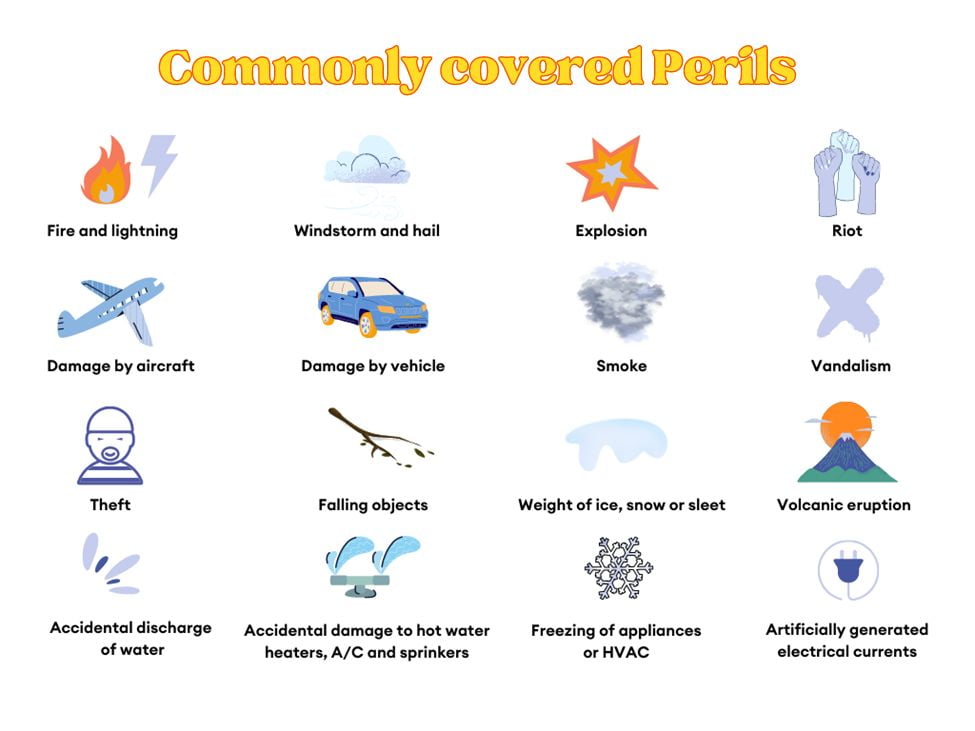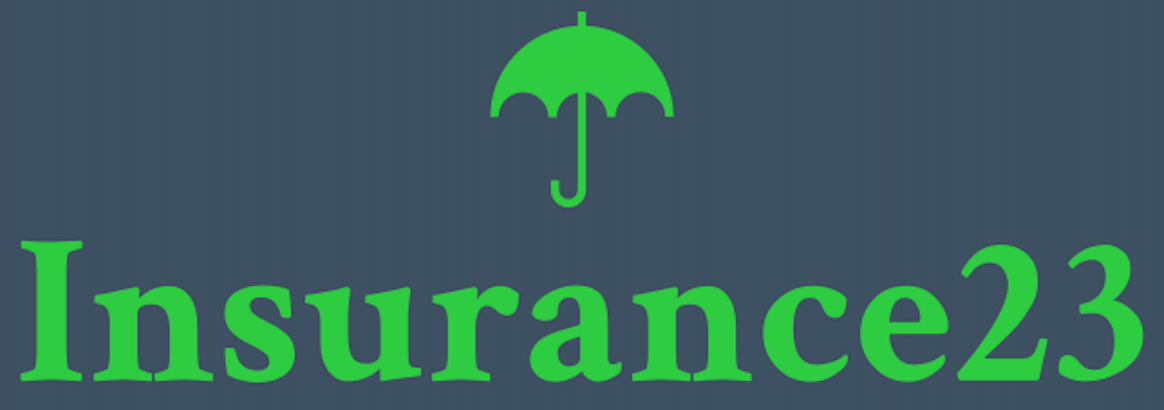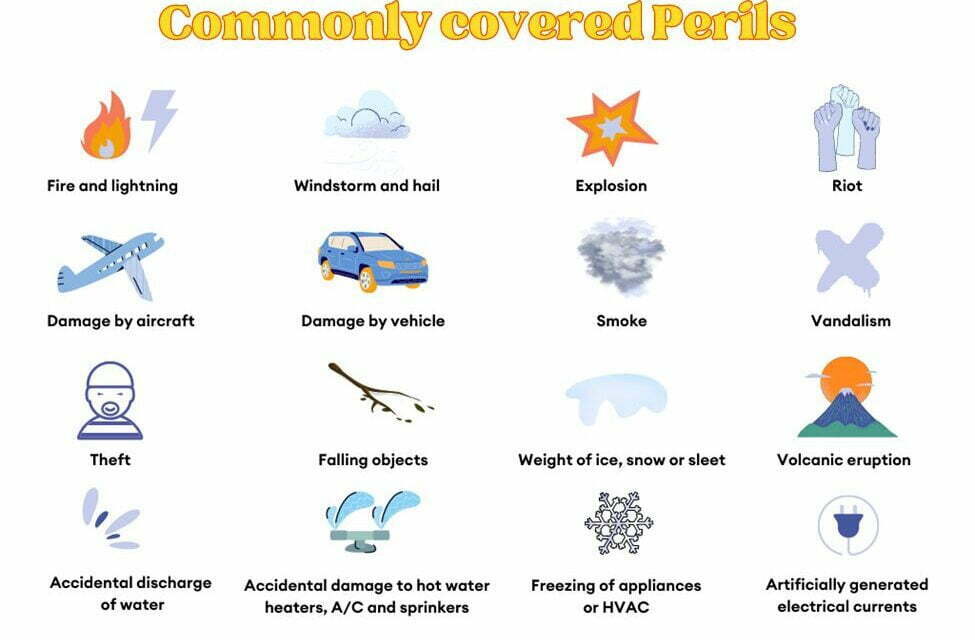
When it comes to protecting your home, hazard insurance plays a crucial role. But what exactly is hazard insurance, and how does it differ from homeowners insurance? In this comprehensive guide, we’ll delve into the intricacies of hazard insurance, its coverage, and what you need to know to safeguard your investment. Whether you’re a first-time homebuyer or a seasoned homeowner, understanding hazard insurance is essential for peace of mind.
Hazard Insurance vs. Homeowners Insurance
When discussing the coverage for your home, you may come across the terms hazard insurance and homeowners insurance. While they are related, they are not the same. Homeowners insurance is a comprehensive policy that includes various coverages, such as dwelling coverage, personal property coverage, liability insurance, and additional living expenses coverage. On the other hand, hazard insurance specifically focuses on protecting the structure of your home from specific perils or hazards.
Hazard insurance is often referred to as dwelling coverage within a homeowners insurance policy. This coverage is designed to protect the physical structure of your house, including the walls, roof, foundation, and attached structures like garages or sheds. It provides financial compensation to repair or rebuild your home in the event of covered perils such as fire, severe storms, hail, and vandalism.
Covered Perils
Hazard insurance covers a range of perils or hazards that may cause damage to your home. These perils typically include:
- Fire and Smoke Damage: Hazard insurance provides coverage for damages caused by fires and smoke, ensuring that you can restore your home to its pre-loss condition.
- Wind and Hail Damage: Severe storms, including high winds and hail, can wreak havoc on your home. Hazard insurance offers protection against such damages, allowing you to repair or replace affected components.
- Lightning Damage: If your home is struck by lightning, hazard insurance will cover the resulting damages, including electrical system repairs and structural damage.
- Damage from Snow, Ice, or Sleet: In regions prone to winter weather, hazard insurance safeguards your home against damages caused by heavy snow, ice accumulation, or freezing temperatures.
- Damage from Vehicles: Accidents involving vehicles, whether it’s a car crashing into your home or an aircraft accident, can result in significant damage. Hazard insurance provides coverage for these types of incidents.
- Fallen Trees and Other Objects: Hazard insurance protects against damages caused by fallen trees, branches, or other objects due to storms or accidents.
- Theft and Vandalism: If your home is burglarized or vandalized, hazard insurance can assist in covering the cost of repairs or replacement of stolen or damaged items.
- Damage Caused by Heating, AC Units, or Electric Currents: Hazards related to malfunctioning heating systems, air conditioning units, or electrical currents are typically covered by hazard insurance.
Exclusions and Additional Coverage
While hazard insurance covers a wide range of perils, there are certain exclusions and limitations to be aware of. It’s important to review your policy carefully to understand what is and isn’t covered. Here are some common exclusions:
- Flooding: Hazard insurance does not cover damages caused by floods. If you live in a flood-prone area, it’s crucial to consider purchasing separate flood insurance to protect your home.
- Earthquakes: Earthquake damage is generally not covered under hazard insurance. If you reside in an earthquake-prone region, obtaining earthquake insurance is advisable.
- Pest Infestations: Damage caused by pests, such as termites or rodents, is typically excluded from hazard insurance policies. Consider pest control measures to prevent infestations.
- Wear and Tear: Normal wear and tear, including gradual deterioration or aging of your home, is not covered by hazard insurance. Regular maintenance and upkeep are essential to prevent these issues.
To address these exclusions and ensure comprehensive coverage, you may need to purchase additional policies or endorsements. For example, if you live in a high-risk flood zone, obtaining flood insurance is crucial to protect your home from flood-related damages.
Determining Coverage Limits
When obtaining hazard insurance, it’s important to determine the appropriate coverage limits for your home. The coverage limit represents the maximum amount your insurance company will pay for covered losses. To determine the appropriate coverage limit, consider the following factors:
- Rebuilding Costs: Calculate the estimated cost to rebuild your home in the event of a total loss. This includes materials, labor, and any additional expenses associated with reconstruction.
- Replacement Value: Assess the value of your personal belongings and ensure you have sufficient coverage to replace them if they are damaged or destroyed.
- Local Building Codes: Familiarize yourself with local building codes and regulations, as complying with these standards may impact the cost of rebuilding your home.
- Unique Features: Consider any unique or high-value features of your home, such as custom finishes or specialized equipment, that may require additional coverage.
Consulting with a reputable insurance agent can help you determine the appropriate coverage limits based on these factors and ensure you have adequate protection for your home.
Filing a Claim
In the unfortunate event that your home sustains damage covered by your hazard insurance policy, filing a claim is the next step to initiate the reimbursement process. Here’s a general overview of the claim filing process:
- Notify your insurance company: Contact your insurance company as soon as possible to report the damage. They will guide you through the necessary steps and provide you with the required documentation.
- Document the damage: Take photographs or videos of the damage to support your claim. Documenting the extent of the damage is crucial for a smooth claims process.
- Provide supporting documentation: Gather any relevant documents, such as receipts, repair estimates, or other evidence of the damage. This will help substantiate your claim.
- Work with an adjuster: An insurance adjuster will assess the extent of the damage and determine the amount of compensation you are entitled to under your policy.
- Repair or rebuild: Once your claim is approved, you can proceed with the necessary repairs or rebuilding process. Consult with contractors and vendors to restore your home to its pre-loss condition.
It’s essential to familiarize yourself with your insurance company’s specific claim filing procedures and any deadlines for reporting the damage. Promptly filing your claim and providing accurate documentation will facilitate a smoother claims process.
Selecting the Right Hazard Insurance Policy
Choosing the right hazard insurance policy requires careful consideration and research. Here are some key factors to keep in mind when selecting a policy:
- Coverage Options: Evaluate the coverage options offered by different insurance providers. Ensure that the policy covers the perils most relevant to your geographical location and specific risks.
- Financial Stability: Research the financial stability and reputation of the insurance company. Look for ratings from independent rating agencies to assess their ability to fulfill claims.
- Deductibles and Premiums: Understand the deductible and premium structure of the policy. A deductible is the amount you are responsible for paying before the insurance coverage kicks in, while premiums are the periodic payments you make for the policy. Find a balance that suits your budget and risk tolerance.
- Customer Service and Claims Handling: Read reviews and gather feedback on the insurer’s customer service and claims handling process. Prompt and efficient claims handling is crucial during times of distress.
- Bundling Options: Consider bundling your hazard insurance with other insurance policies, such as auto insurance or umbrella insurance, to potentially save on premiums.
By carefully evaluating these factors, you can select a hazard insurance policy that provides adequate coverage and aligns with your specific needs and requirements.
Additional Considerations for Homebuyers
If you’re in the process of purchasing a home, hazard insurance is a critical component of securing a mortgage. Mortgage lenders typically require borrowers to have hazard insurance in place before finalizing the loan. Here are some key considerations for homebuyers:
- Lender Requirements: Understand your lender’s specific hazard insurance requirements. They may have minimum coverage limits or additional endorsements they expect you to include in your policy.
- Escrow Accounts: In many cases, your hazard insurance premiums may be included in your mortgage payments through an escrow account. This ensures that the insurance premiums are paid on time.
- Home Inspection: Conduct a thorough home inspection before purchasing a property. This can uncover potential hazards or risks that may impact your insurance coverage and premiums.
- Consult an Insurance Agent: Work with an experienced insurance agent who can guide you through the process of obtaining hazard insurance and ensure you meet all the necessary requirements.
By addressing these considerations early in the homebuying process, you can streamline the insurance procurement process and avoid potential delays or issues.
Maintaining Your Hazard Insurance Policy
Once you have hazard insurance in place, it’s important to maintain your policy to ensure continuous coverage. Here are some tips for managing your hazard insurance:
- Review Your Policy Annually: Regularly review your policy to ensure it accurately reflects your current needs and the value of your home. Update any changes in coverage requirements or property improvements.
- Communicate Changes to Your Insurance Company: Notify your insurance company of any significant changes to your property, such as renovations or additions. Failure to communicate these changes may result in gaps in coverage.
- Conduct Regular Home Maintenance: Proper home maintenance, including routine inspections, repairs, and upkeep, can help prevent potential hazards and reduce the risk of damage.
- Stay Informed: Stay updated on any changes in local building codes, zoning regulations, or environmental risks that may impact your insurance coverage.
By actively managing your hazard insurance policy and staying proactive in maintaining your home, you can ensure that you have the necessary protection in place.
Frequently Asked Questions (FAQ)
1. What is the difference between hazard insurance and homeowners insurance?
Hazard insurance specifically focuses on protecting the physical structure of your home from specific perils or hazards, such as fire, storms, and vandalism. Homeowners insurance, on the other hand, is a more comprehensive policy that includes additional coverages like personal property, liability, and living expenses coverage.
2. Does hazard insurance cover flooding?
No, hazard insurance typically does not cover damages caused by floods. If you live in a flood-prone area, you should consider purchasing separate flood insurance.
3. Are pest infestations covered by hazard insurance?
Damage caused by pests, such as termites or rodents, is usually excluded from hazard insurance policies. To address this, consider pest control measures to prevent infestations.
4. How do I determine the appropriate coverage limits for hazard insurance?
To determine the right coverage limits, calculate the estimated cost to rebuild your home in the event of a total loss. This includes materials, labor, and additional expenses associated with reconstruction. Consult with an insurance agent for guidance.
5. What should I do if my home sustains damage covered by hazard insurance?
If your home suffers covered damage, promptly notify your insurance company, document the damage, provide supporting documentation, and work with an adjuster to assess the extent of the damage. Once your claim is approved, you can proceed with repairs or rebuilding.
6. Can I bundle hazard insurance with other insurance policies?
Yes, many insurance providers offer bundling options. You can bundle hazard insurance with other policies, such as auto insurance or umbrella insurance, to potentially save on premiums.
Conclusion
Hazard insurance is a vital component of protecting your home from unforeseen perils and hazards. By understanding the coverage provided, exclusions, and additional considerations, you can make informed decisions and secure the appropriate insurance coverage for your home. Remember to review your policy regularly, communicate any changes, and maintain your property to ensure continuous coverage and peace of mind.
Investing in hazard insurance is an investment in protecting your most valuable asset, your home. With the right coverage in place, you can face unexpected challenges with confidence, knowing that your home is safeguarded against the hazards that may come its way.





